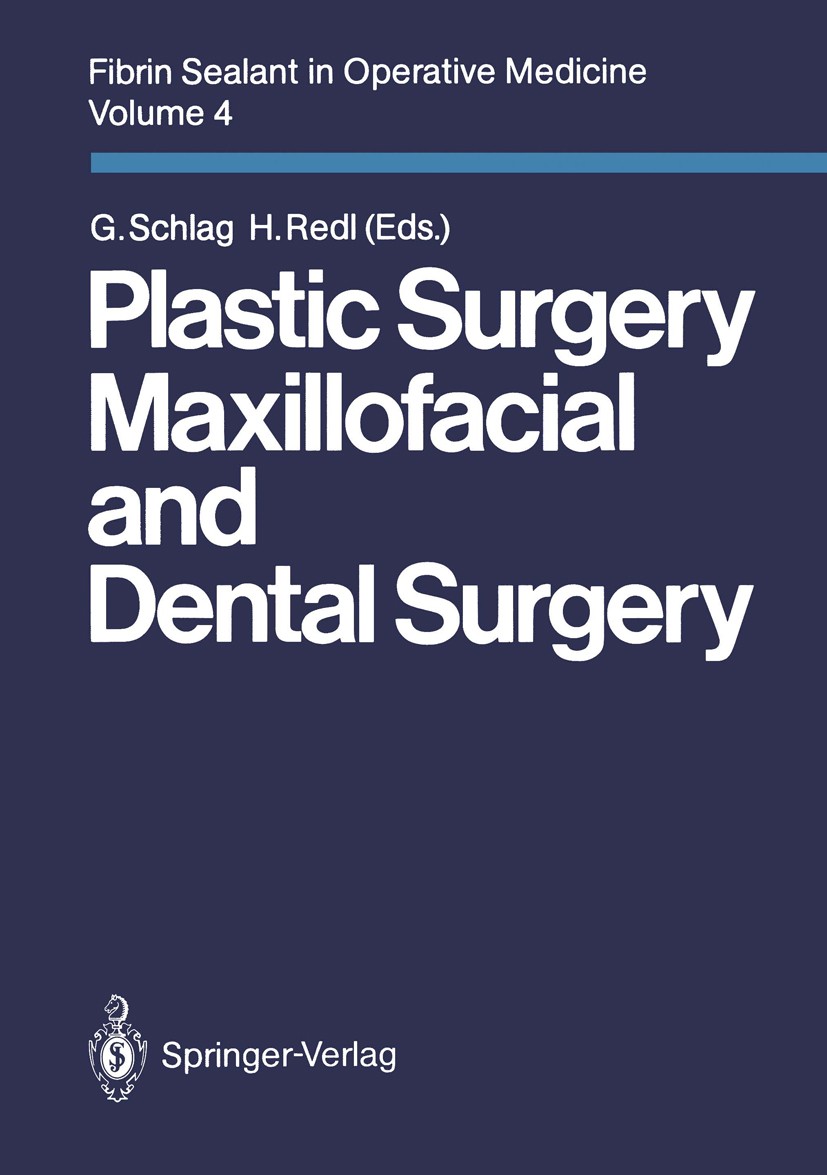| 书目名称 | Fibrin Sealant in Operative Medicine | | 副标题 | Volume 4 Plastic Sur | | 编辑 | Günther Schlag,Heinz Redl | | 视频video | http://file.papertrans.cn/343/342504/342504.mp4 | | 图书封面 |  | | 描述 | Fibrin plays a prominent role in wound healing. It has a hemostatic effect, induces cellular response to wound damage, and, by forming strands to build a matrix, assists in neovascularization and fibroblast proliferation. The concept of using clotting substances from human blood for wound manage ment and to achieve hemostasis in bleeding parenchymatous organs can be traced to 1909, when Bergel [1] reported on the hemostatic effect offibrin powder. In 1915, Grey [3] employed fibrin to control bleeding in neurosurgical operations of the brain. A year later, Harvey [4] used fibrin patches to stop bleeding from parenchy matous organs in general surgery. It took more than two decades for this ingenious idea to be rediscovered. In 1940, Young and Medawar [8] reported on experimental nerve anastomosis by sealing. Similarly, Tarlov and Benjamin [7] reunited nerves with plasma clots in 1943. Tarlov improved the results obtained with clot anastomosing of nerves by avoiding tension at the nerve stumps. In 1944, Cronkite et al. [2] reported on an initial series of eight cases in which fibrinogen and thrombin had been used successfully for anchoring skin grafts. | | 出版日期 | Conference proceedings 1986Latest edition | | 关键词 | blood; brain; general surgery; medicine; plasma; plastic surgery; proliferation; reconstructive surgery; ski | | 版次 | 1 | | doi | https://doi.org/10.1007/978-3-642-82880-5 | | isbn_softcover | 978-3-540-16944-4 | | isbn_ebook | 978-3-642-82880-5 | | copyright | Springer-Verlag Berlin Heidelberg 1986 |
The information of publication is updating

|
|
 |Archiver|手机版|小黑屋|
派博传思国际
( 京公网安备110108008328)
GMT+8, 2025-11-11 13:36
|Archiver|手机版|小黑屋|
派博传思国际
( 京公网安备110108008328)
GMT+8, 2025-11-11 13:36


